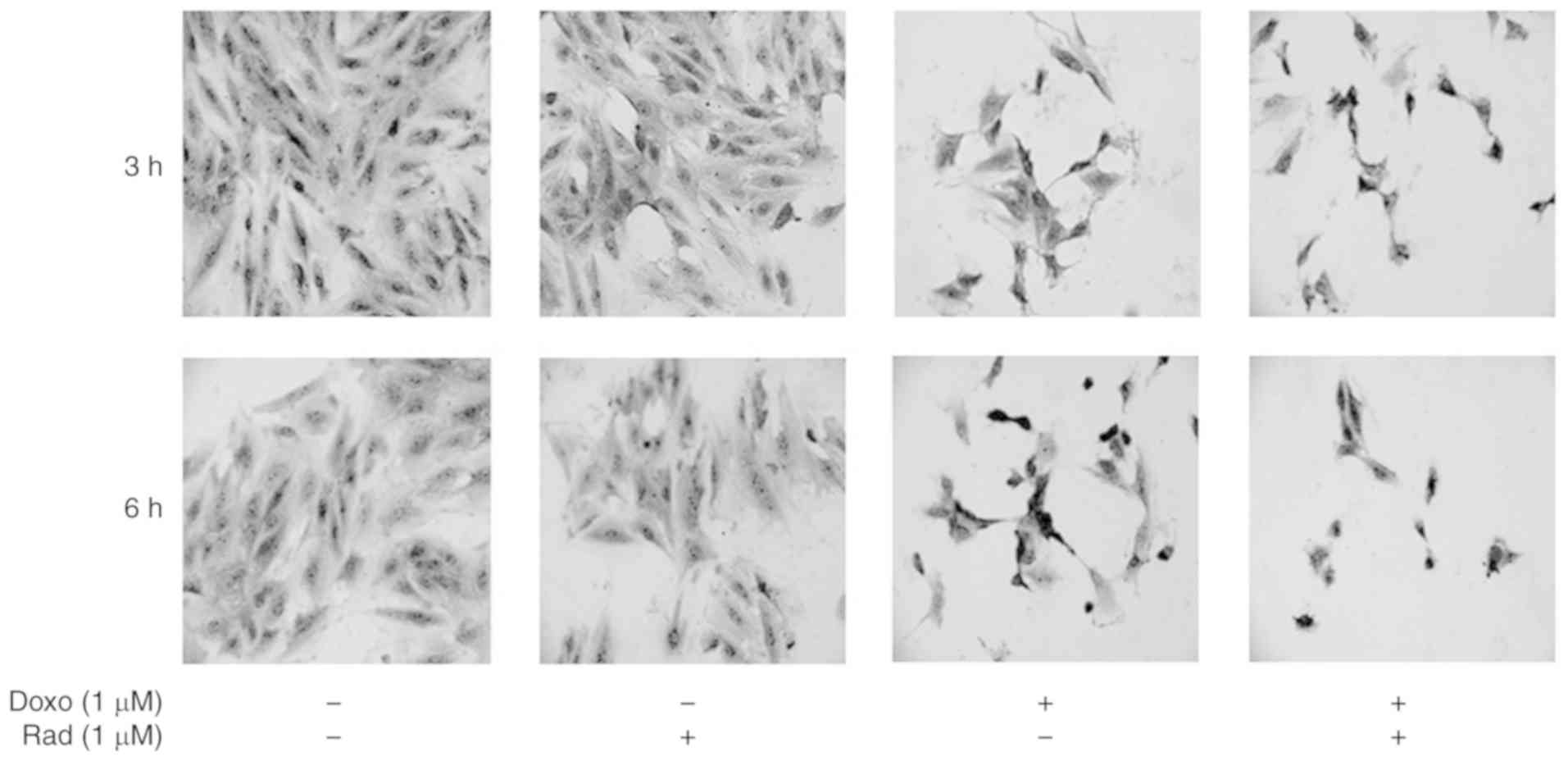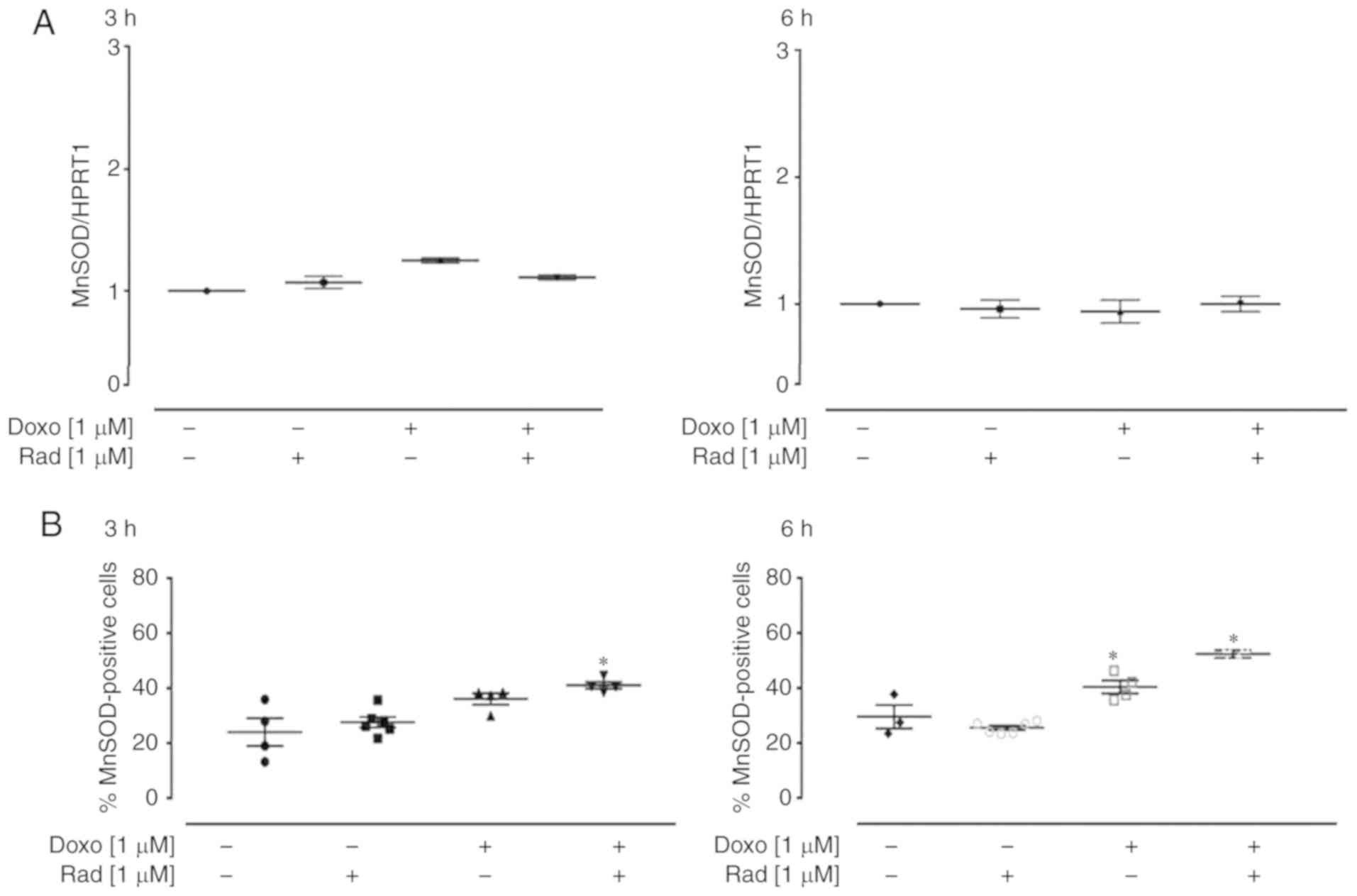|
1
|
Michela P, Velia V, Aldo P and Ada P: Role
of connexin43 in cardiovascular diseases. Eur J Pharmacol.
768:71–76. 2015. View Article : Google Scholar : PubMed/NCBI
|
|
2
|
Severs NJ, Bruce AF, Dupont E and Rothery
S: Remodelling of gap junctions and connexin expression in diseased
myocardium. Cardiovasc Res. 80:9–19. 2008. View Article : Google Scholar : PubMed/NCBI
|
|
3
|
Fontes MS, van Veen TA, de Bakker JM and
van Rijen HV: Functional consequences of abnormal Cx43 expression
in the heart. Biochim Biophys Acta. 1818:2020–2029. 2012.
View Article : Google Scholar
|
|
4
|
Ruiz-Meana M, Rodríguez-Sinovas A,
Cabestrero A, Boengler K, Heusch G and Garcia-Dorado D:
Mitochondrial connexin43 as a new player in the pathophysiology of
myocardial ischaemia-reperfusion injury. Cardiovasc Res.
77:325–333. 2008. View Article : Google Scholar
|
|
5
|
Boengler K, Stahlhofen S, van de Sand A,
Gres P, Ruiz-Meana M, Garcia-Dorado D, Heusch G and Schulz R:
Presence of connexin 43 in subsarcolemmal, but not in
interfibrillar cardiomyocyte mitochondria. Basic Res Cardiol.
104:141–147. 2009. View Article : Google Scholar : PubMed/NCBI
|
|
6
|
Heinzel FR, Luo Y, Li X, Boengler K,
Buechert A, García-Dorado D, Di Lisa F, Schulz R and Heusch G:
Impairment of diazoxide-induced formation of reactive oxygen
species and loss of cardioprotection in connexin 43 deficient mice.
Circ Res. 97:583–586. 2005. View Article : Google Scholar : PubMed/NCBI
|
|
7
|
Rehling P, Brandner K and Pfanner N:
Mitochondrial import and the twin-pore translocase. Nat Rev Mol
Cell Biol. 5:519–530. 2004. View Article : Google Scholar : PubMed/NCBI
|
|
8
|
Lu G, Haider HKH, Porollo A and Ashraf M:
Mitochondria-specific transgenic overexpression of connexin-43
simulates preconditioning-induced cytoprotection of stem cells.
Cardiovasc Res. 88:277–286. 2010. View Article : Google Scholar : PubMed/NCBI
|
|
9
|
Pecoraro M, Sorrentino R, Franceschelli S,
Del Pizzo M, Pinto A and Popolo A: Doxorubicin-mediated
cardiotoxicity: Role of mitochondrial connexin 43. Cardiovasc
Toxicol. 15:366–376. 2015. View Article : Google Scholar : PubMed/NCBI
|
|
10
|
Pecoraro M, Ciccarelli M, Fiordelisi A,
Iaccarino G, Pinto A and Popolo A: Diazoxide improves mitochondrial
connexin 43 expression in a mouse model of doxorubicin-induced
cardiotox-icity. Int J Mol Sci. 19:7572018. View Article : Google Scholar
|
|
11
|
Kondru SK, Potnuri AG, Allakonda L and
Konduri P: Histamine 2 receptor antagonism elicits protection
against doxorubicin-induced cardiotoxicity in rodent model. Mol
Cell Biochem. 441:77–88. 2018. View Article : Google Scholar
|
|
12
|
Octavia Y, Tocchetti CG, Gabrielson KL,
Janssens S, Crijns HJ and Moens AL: Doxorubicin-induced
cardiomyopathy: From molecular mechanisms to therapeutic
strategies. J Mol Cell Cardiol. 52:1213–1225. 2012. View Article : Google Scholar : PubMed/NCBI
|
|
13
|
Berthiaume JM and Wallace KB: Persistent
alterations to the gene expression profile of the heart subsequent
to chronic doxorubicin treatment. Cardiovasc Toxicol. 7:178–191.
2007. View Article : Google Scholar : PubMed/NCBI
|
|
14
|
Angsutararux P, Luanpitpong S and
Issaragrisil S: Chemotherapy-induced cardiotoxicity: Overview of
the roles of oxidative stress. Oxid Med Cell Longev.
2015:7956022015. View Article : Google Scholar : PubMed/NCBI
|
|
15
|
Mukhopadhyay P, Rajesh M, Bátkai S,
Kashiwaya Y, Haskó G, Liaudet L, Szabó C, Pacher P and Am J: Role
of superoxide nitric oxide and peroxynitrite in doxorubicin-induced
cell death in vivo and in vitro. Physiol Heart Circ Physiol.
296:H1466–H1483. 2009. View Article : Google Scholar
|
|
16
|
Pacher P, Beckman JS and Liaudet L: Nitric
oxide and peroxynitrite in health and disease. Physiol Rev.
87:315–424. 2007. View Article : Google Scholar : PubMed/NCBI
|
|
17
|
Tsutsui H, Kinugawa S and Matsushima S:
Oxidative stress and heart failure. Am J Physiol Heart Circ
Physiol. 301:H2181–H2190. 2011. View Article : Google Scholar : PubMed/NCBI
|
|
18
|
Xu Z, Lin S, Wu W, Tan H, Wang Z, Cheng C,
Lu L and Zhang X: Ghrelin prevents doxorubicin-induced
cardiotoxicity through TNF-alpha/NF-kappaB pathways and
mitochondrial protective mechanisms. Toxicology. 247:133–138. 2008.
View Article : Google Scholar : PubMed/NCBI
|
|
19
|
Shirazi LF, Bissett J, Romeo F and Jawahar
LM: Role of Inflammation in heart failure. Curr Atheroscl Rep.
19:272017. View Article : Google Scholar
|
|
20
|
Bartekova M, Radosinska J, Jelemensky M
and Dhalla NS: Role of cytokines and inflammation in heart function
during health and disease. Heart Failure Rev. 23:733–758. 2018.
View Article : Google Scholar
|
|
21
|
Sanskriti K, Gurinder BS and Madhu K:
Nitric oxide synthase and diabetic cardiomyopathy. Nitric Oxide.
43:29–34. 2014. View Article : Google Scholar
|
|
22
|
Schulte TW, Akinaga S, Soga S, Sullivan W,
Stensgard B, Toft D and Neckers LM: Antibiotic radicicol binds to
the N-terminal domain of Hsp90 and shares important biologic
activities with geldanamycin. Cell Stress Chaper. 3:100–108. 1998.
View Article : Google Scholar
|
|
23
|
Livak KJ and Schmittgen TD: Analysis of
relative gene expression data using real-time quantitative PCR and
the 2(-Delta Delta C(T)) method. Methods. 25:402–408. 2001.
View Article : Google Scholar
|
|
24
|
Boengler K, Dodoni G, Rodriguez-Sinovas A,
Cabestrero A, Ruiz-Meana M, Gres P, Konietzka I, Lopez-Iglesias C,
Garcia-Dorado D, Di Lisa F, et al: Connexin 43 in cardiomyocyte
mitochondria and its increase by ischemic preconditioning.
Cardiovasc Res. 67:234–244. 2005. View Article : Google Scholar : PubMed/NCBI
|
|
25
|
Di Iorio B, Marzocco S, Di Micco L, Adesso
S, De Blasio A, Autore G, Sirico ML, Fazeli G and Heidland A:
High-tone external muscle stimulation in patients with acute kidney
injury (AKI): Beneficial effects on NO metabolism asymmetric
dimethylarginine and endothelin-1. Clin Nephrol. 82:304–312. 2014.
View Article : Google Scholar : PubMed/NCBI
|
|
26
|
Miao L and St Clair DK: Regulation of
superoxide dismutase genes: Implications in disease. Free Radic
Biol Med. 47:344–356. 2009. View Article : Google Scholar : PubMed/NCBI
|
|
27
|
Wallace DC: Mitochondrial defects in
cardiomyopathy and neuromuscular disease. Am Heart J. 139:S70–S85.
2000. View Article : Google Scholar : PubMed/NCBI
|
|
28
|
Pecoraro M, Del Pizzo M, Marzocco S,
Sorrentino R, Ciccarelli M, Iaccarino G, Pinto A and Popolo A:
Inflammatory mediators in a short-time mouse model of
doxorubicin-induced cardiotoxicity. Toxicol Appl Pharmacol.
293:44–52. 2016. View Article : Google Scholar : PubMed/NCBI
|
|
29
|
Ueno M, Kakinuma Y, Yuhki K, Murakoshi N,
Iemitsu M, Miyauchi T and Yamaguchi I: Doxorubicin induces
apoptosis by activation of caspase-3 in cultured cardiomyocytes in
Vitro and rat cardiac ventricles in Vivo. J Pharmacol Sci.
101:151–158. 2006. View Article : Google Scholar : PubMed/NCBI
|
|
30
|
Ghosh J, Das J, Manna P and Sil PC: The
protective role of arjunolic acid against doxorubicin induced
intracellular ROS dependent JNK-p38 and p53-mediated cardiac
apoptosis. Biomaterials. 32:4857–4866. 2011. View Article : Google Scholar : PubMed/NCBI
|
|
31
|
Del Prete A, Allavena P, Santoro G,
Fumarulo R, Corsi MM and Mantovani A: Molecular pathways in
cancer-related inflammation. Biochem Med (Zagreb). 21:264–275.
2011. View Article : Google Scholar
|
|
32
|
Perkins ND: Post-translational
modifications regulating the activity and function of the nuclear
factor κB pathway. Oncogene. 25:6717–6730. 2006. View Article : Google Scholar : PubMed/NCBI
|
|
33
|
Marzocco S, Adesso S, Alilou M, Stuppner H
and Schwaiger S: Anti-inflammatory and anti-oxidant potential of
the root extract and constituents of doronicum austriacum.
Molecules. 22:10032017. View Article : Google Scholar
|
|
34
|
Witek P, Korga A, Burdan F, Ostrowska M,
Nosowska B, Iwan M and Dudka J: The effect of a number of H9C2 rat
cardiomyocytes passage on repeatability of cytotoxicity study
results. Cytotechnology. 68:2407–2415. 2016. View Article : Google Scholar : PubMed/NCBI
|
|
35
|
Tu RH, Li QJ, Huang Z, He Y, Meng JJ,
Zheng HL, Zeng ZY and Zhong GQ: Novel functional role of heat shock
protein 90 in mitochondrial connexin 43-mediated hypoxic
postconditioning. Cell Physiol Biochem. 44:982–997. 2017.
View Article : Google Scholar : PubMed/NCBI
|
|
36
|
Vogel C and Marcotte EM: Insights into the
regulation of protein abundance from proteomic and transcriptomic
analyses. Nat Rev Genet. 13:2227–2232. 2012. View Article : Google Scholar
|
|
37
|
Wang J, Ma L, Tang X, Zhang X, Qiao Y, Shi
Y, Xu Y, Wang Z, Yu Y and Sun F: Doxorubicin induces apoptosis by
targeting Madcam1 and AKT and inhibiting protein translation
initiation in hepatocellular carcinoma cells. Oncotarget.
6:24075–24091. 2015. View Article : Google Scholar : PubMed/NCBI
|
|
38
|
Balligand JL and Cannon PJ: Nitric oxide
synthases and cardiac muscle. Autocrine and paracrine influences.
Arterioscler Thromb Vasc Biol. 17:1846–1858. 1997. View Article : Google Scholar : PubMed/NCBI
|
|
39
|
Ahsan H: 3-Nitrotyrosine: A biomarker of
nitrogen free radical species modified proteins in systemic
autoimmunogenic conditions. Hum Immunol. 74:1392–1399. 2013.
View Article : Google Scholar : PubMed/NCBI
|
|
40
|
Ye M, Zhang L, Yan Y and Lin H:
Punicalagin protects H9c2 cardiomyocytes from doxorubicin-induced
toxicity through activation of Nrf2/HO-1 signaling. Biosci Rep.
39:BSR201902292019. View Article : Google Scholar : PubMed/NCBI
|





















